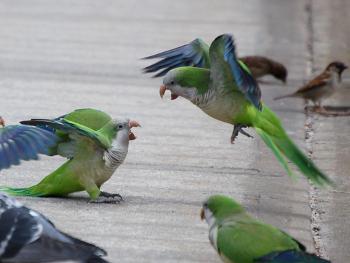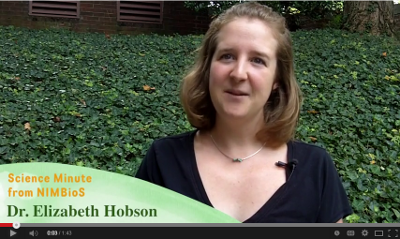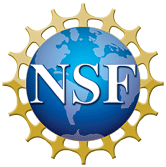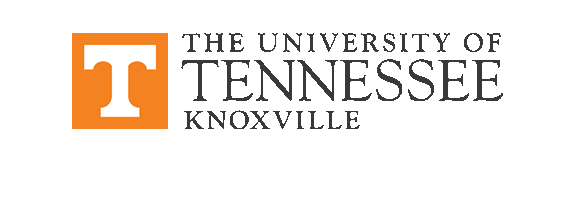Being Social: Learning from the Behavior of Birds
New study elucidates the social world of parrots
September 17, 2014

|
| A new study on monk parakeets reveals a sophisticated social structure with layers of relationships and complex interactions. Credit: Steve Baldwin, brooklynparrots.com |
KNOXVILLE–Science has learned a great deal about complex social behavior by studying nonhuman mammals and primates, but parrots might have something to teach too.
With their unusually large brains relative to their body size and advanced cognition, parrots live in a complex social environment---not merely in a large population of cooperating creatures, such as bees or ants, but in a dynamic setting of alliances and competitors. The same is true of the most intelligent mammals: dolphins, whales, primates, and social carnivores, like hyenas and lions.
A new study -- the first to quantify the social lives of parrots using social network analysis - provides intriguing new insights into parrot sociality revealing a sophisticated social structure with layers of relationships and complex interactions.
In the study, researchers observed both wild monk parakeets in Argentina and captive ones in Florida to test several common but largely untested assumptions about parrot sociality.
Because parrots are often observed flying in pairs in the wild, one assumption is that parrot sociality revolves around the pair bond. But are the parrots flying with a true mate or simply flying with any individual?
Coupling the extensive field study with in-depth network analyses revealed that parrots - at least those in captive groups - do show a strong preference for associating with a specific individual and are usually found nearby their mate. In addition, the social networks of captive groups were highly connected with very strong associations with one or two other individuals, multiple moderate associates, and only a few weak associates.

|
| In this Science Minute from NIMBioS, Dr. Elizabeth Hobson explains what monk parakeets can teach us about complex sociality. Movie Credit: NIMBioS. |
The new research demonstrates that the pair is indeed the fundamental unit of monk parakeet social structure, but additional tiers of social structure, akin to social levels documented in elephants, sea lions, and dolphins, may also be present.
In addition to these positive social relationships, captive monk parakeet groups were also structured by aggression. Researchers used observations of winners and losers in aggressive encounters to assign individual parakeets a dominance rank.
Together, the new research shows that the social lives of monk parakeets are structured by several types of relationships. In order for individuals to recognize where they fit in to the social structure of their group, they would need to recognize and remember others in their group, to remember how they interacted with specific individuals, and to remember the outcomes of those interactions. Managing this process may require significant cognitive skills.
"Understanding the social systems of parrots is critical to understanding social processes, such as vocal learning and the spread of behaviors, and can also give us greater insight into how social and cognitive complexity evolved in other species," explained lead author Elizabeth Hobson, a postdoctoral fellow at the National Institute for Mathematical and Biological Synthesis.
"Many parrot species are threatened or endangered, and increased understanding of how parrots structure their social interactions could also improve our ability to manage these populations," Hobson added.
The study was published in The Auk: Ornithological Advances.
Citation: Hobson EA, Avery ML, Wright TF. 2014. The socioecology of Monk Parakeets: Insights into parrot social complexity. AUK 131(4):756-775. [Online]
Media Coverage Highlights
National Geographic En Español.
Scientists crack the social environment of the bird
BirdChannel.com.
New study: Parrots can have "bromances," too
Science.
Complex social lives gave parrots big brains
#
The National Institute for Mathematical and Biological Synthesis is an NSF-supported center that brings together researchers from around the world to collaborate across disciplinary boundaries to investigate solutions to basic and applied problems in the life sciences.
CONTACT:
Catherine Crawley, NIMBioS – (865-974-9350 ccrawley@nimbios.org)
Elizabeth Hobson – (865-974-4974, ehobson@nimbios.org)
NIMBioS
1122 Volunteer Blvd., Suite 106
University of Tennessee
Knoxville,
TN 37996-3410
PH: (865) 974-9334
FAX: (865) 974-9461
Contact NIMBioS


